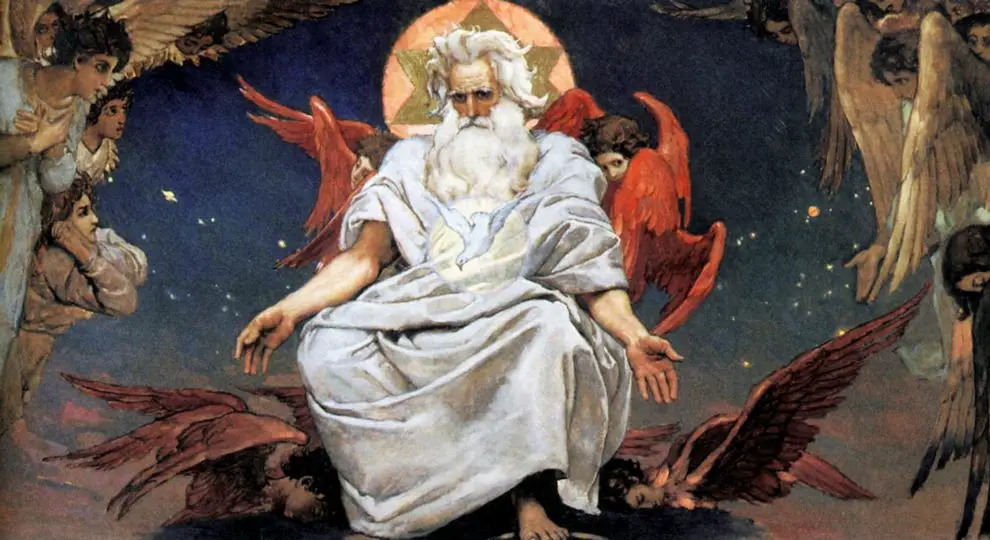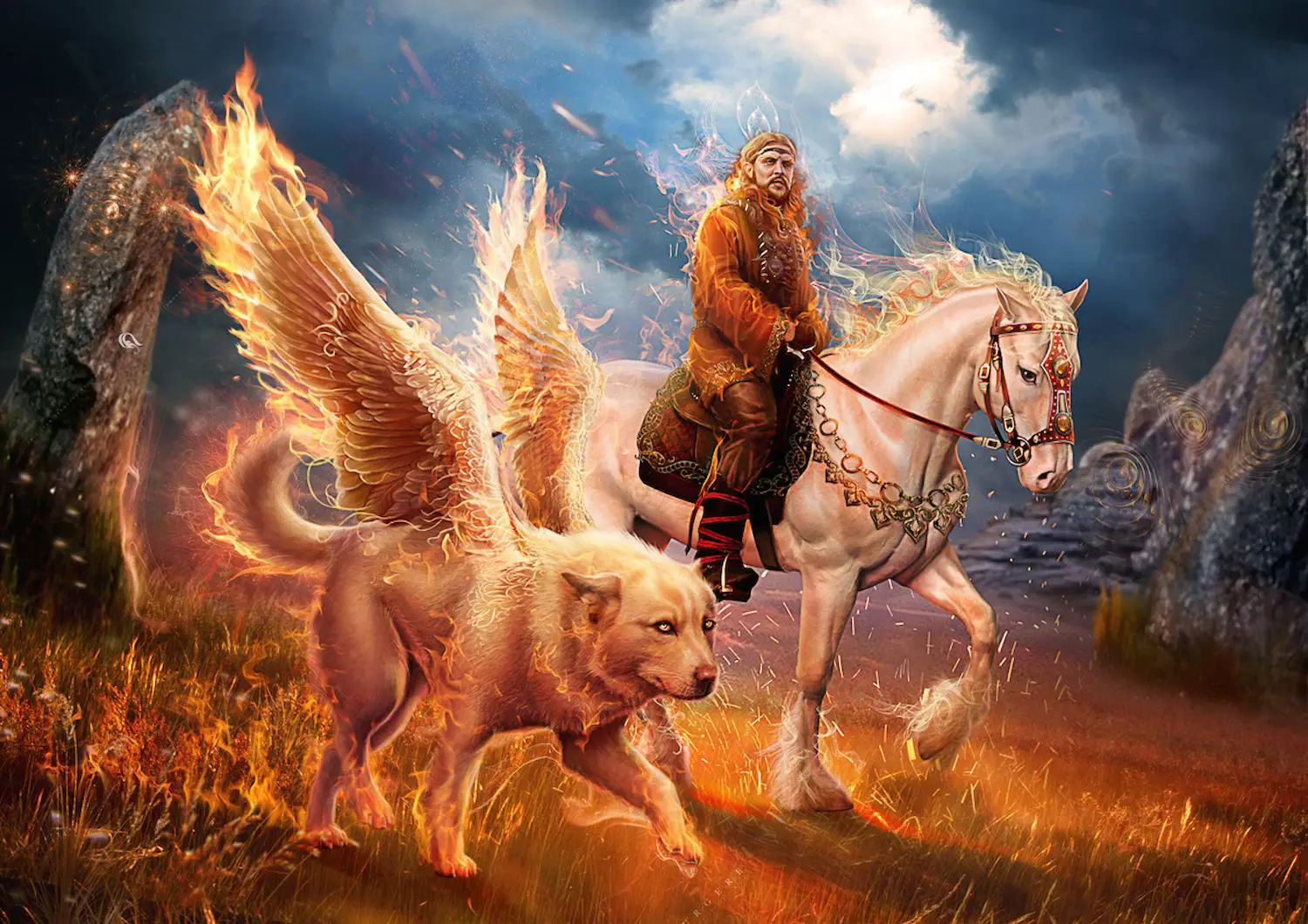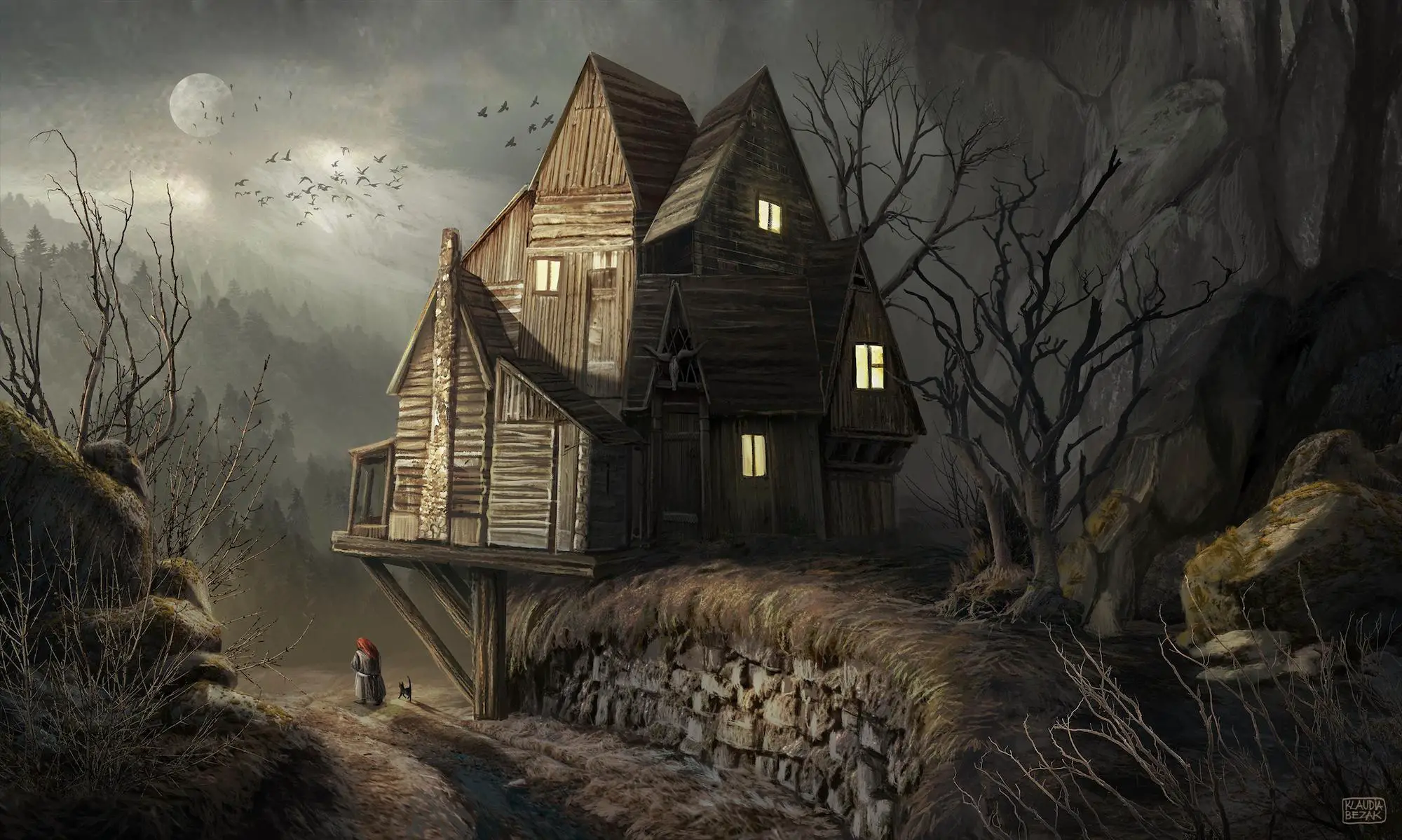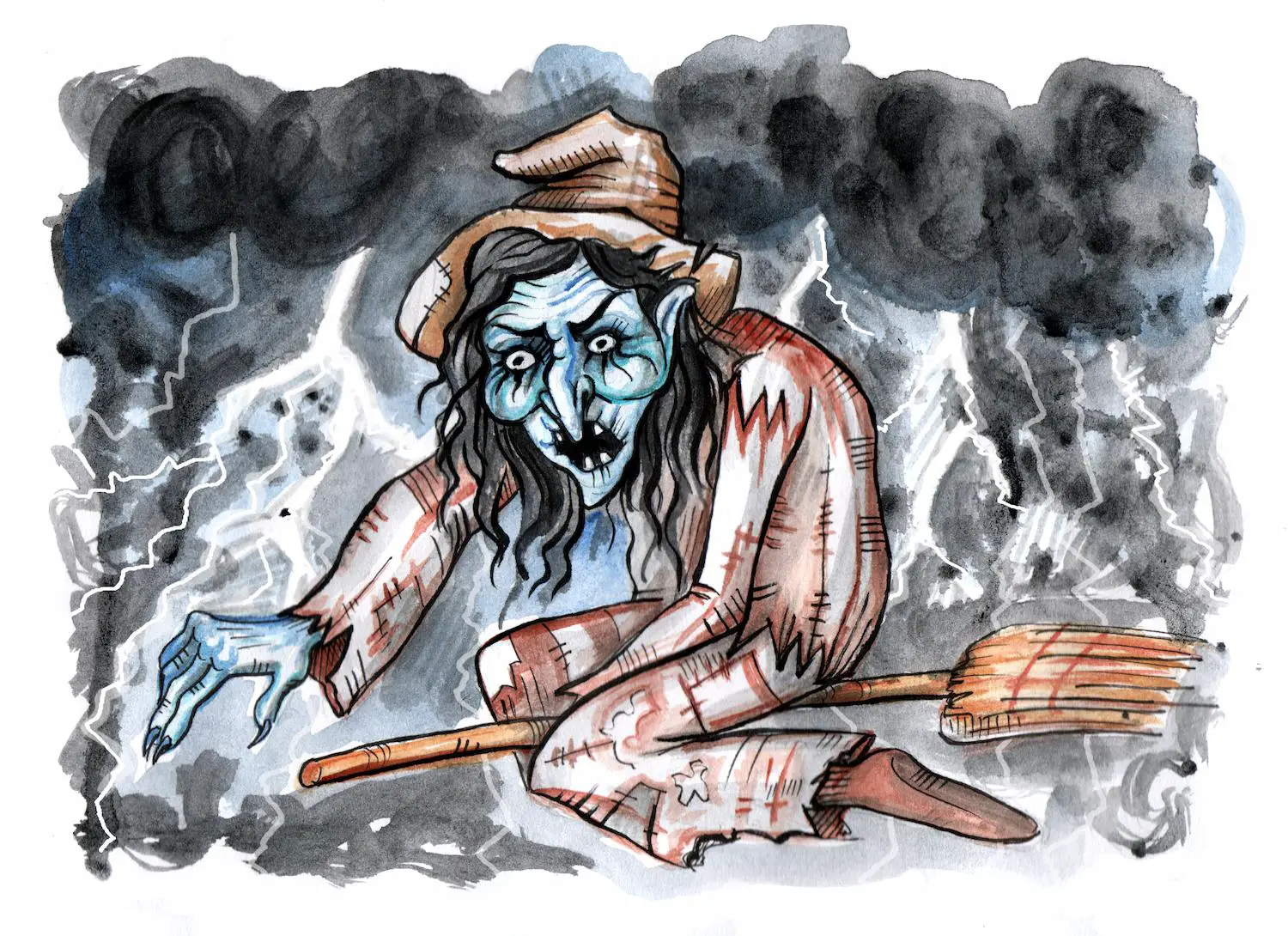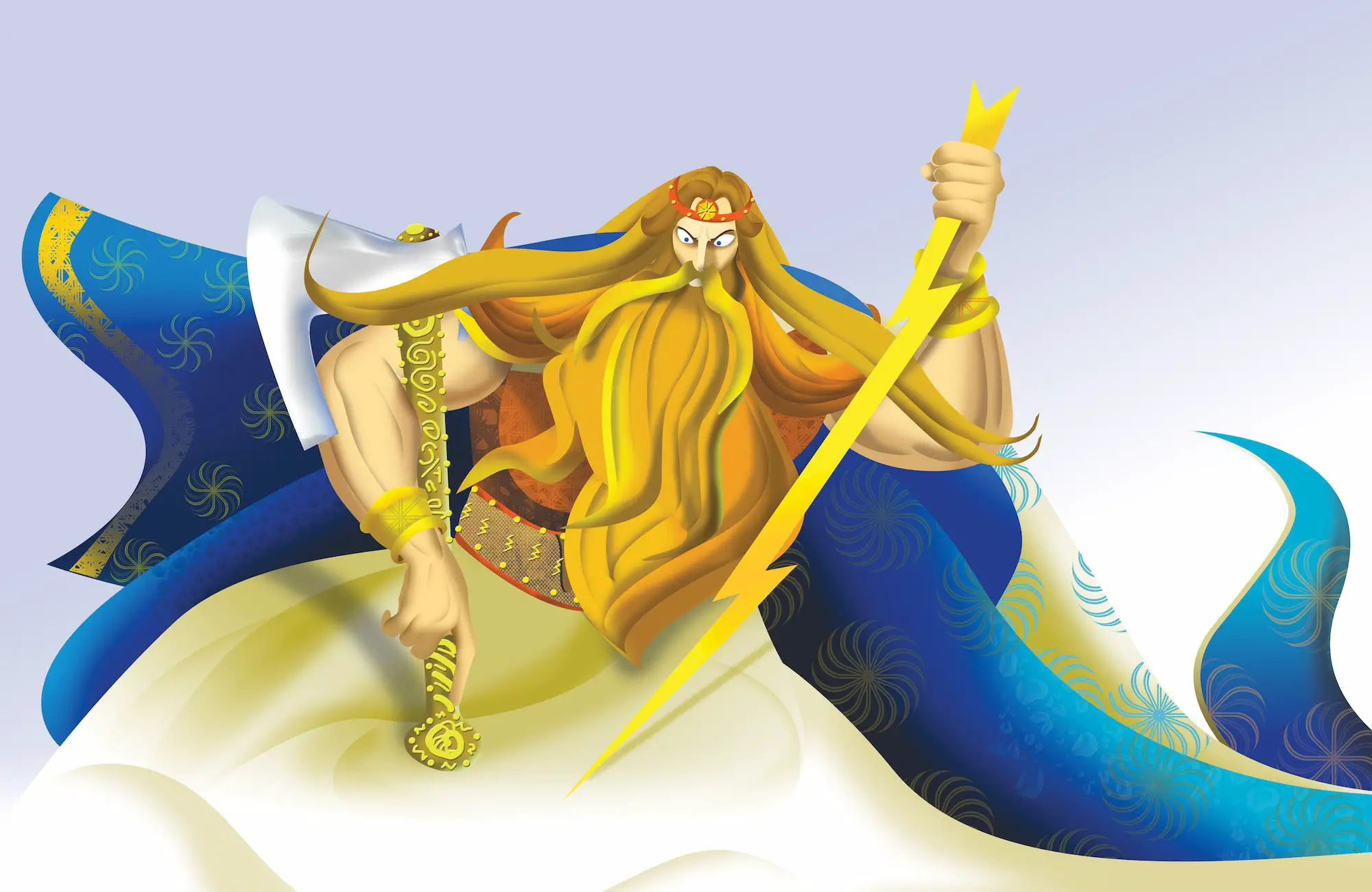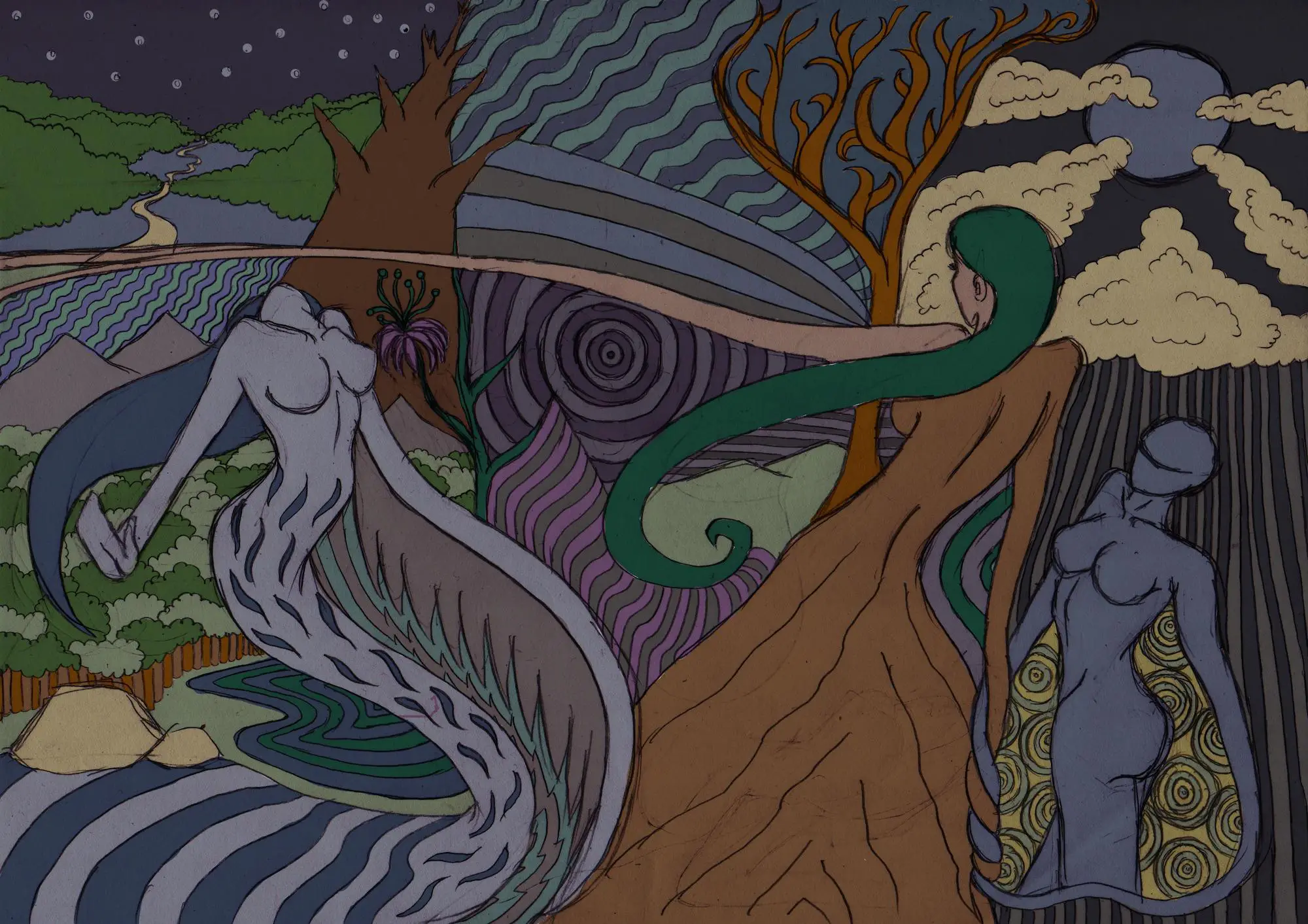The god Rod, also known as Род or Рiд in Cyrillic or as Sud (translated as the judge) is one of the most significant gods in Slavic mythology. As the god of family, rain, fertility, fate, kinship, and ancestors, Rod was regarded as a supreme god.
He is presented as a man wearing a linen belt, holding a fish, wheel, and flowers.
Many sources, however, relate Rod with the Rozhanitsy, the goddesses of fate and childbirth. Keep reading this article to learn more about Rod and various interpretations of this Slavic deity.
Table of Contents
Rod: Slavic God
The pre-Christian Slavic religion is a sphere of slim evidence, where you cannot find a significant amount of historical evidence.
Most of what was recorded about Slavic paganism was done by the Christian missionaries who opposed paganism and Slavic religion. They hoped for the assimilation of the Slavic tribes.
According to certain scholars and folklorists, Rod was considered an absolute, primordial god, who ruled all the other gods and was the supreme creator of the entire divine kinship.
Rod, Slavic god was depicted as a deity that holds the ultimate power of birth, fertility, and reproduction.
The Symbolism in the Name of Rod
The root word “rod” in the name of this god essentially means “birth” or “origin”, but also “kinship”, “tribe” and “destiny”.
The South Slavic ancestors called him “Sud” (the Judge) as he was the ultimate decision-maker who could interweave destiny.
Another name for Rod was “Praboh” which derives from the Slovak tradition, meaning “pre-god”, “first-god” or “primordial god”.
Although present and dominant in pre-Christian times, the role of this supreme god faded in time when his cult lost its significance. In the 9th and 10th centuries, it was replaced by the gods Perun and Svarog.
Thus, Rod cannot be found in the findings related to the pantheon of Vladimir the Great.
Etymology
Reportedly, the name of Rod was confirmed in the Old East Slavic and Old Church Slavonic sources of Slavic religion and Slavic mythology.
The name derives from the Proto-Slavic word “rodъ” meaning “family” or “clan” as well as “harvest” and “yield”.
Originally, “rodъ” is a descendant of the Proto-Indo-European word ” *wréh₂ds“.
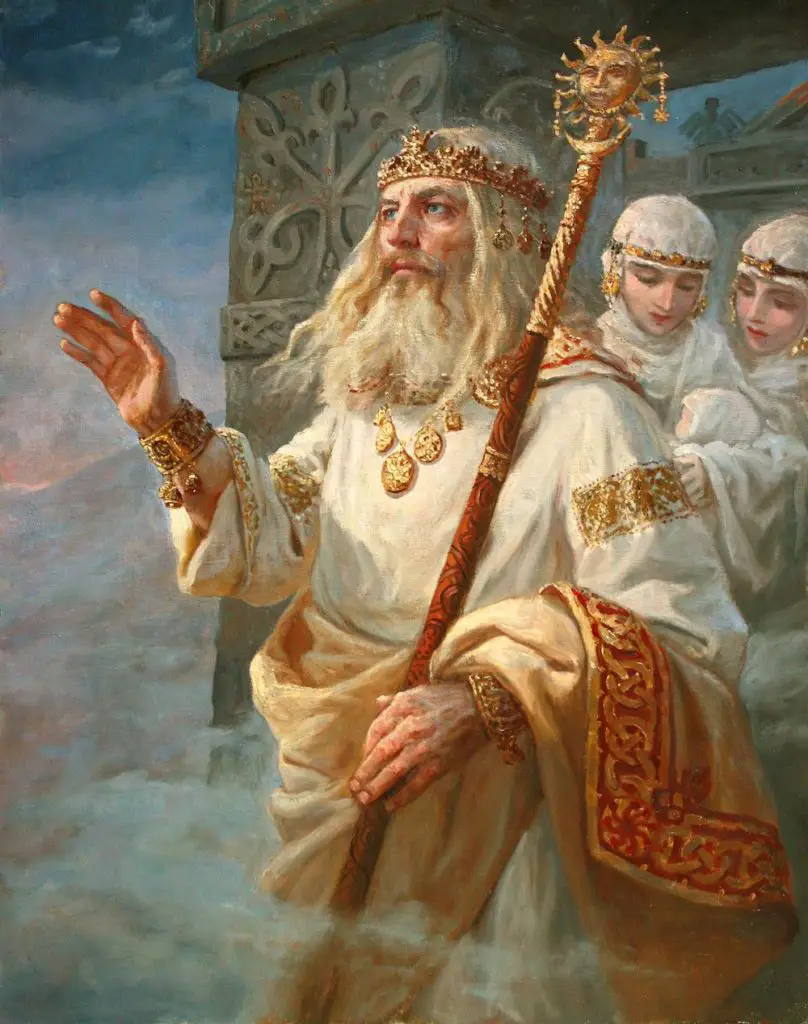
Historical Sources
The primary source that mentions Rod is the 11th-century work called “Word of St.Gregory Theologian About How Pagans Bowed to Idols”.
In 16th-century Rus, the Rod Slavic god was still popular and this has been confirmed through the penance that was given by Orthodox priests as described by the Orthodox monk and saint – Saint Sabbas of Storozhi.
Who Were the Rozhanitsy Deities?
Rod is quite often associated with the cult of the aforementioned Rozhanitsy who were goddesses that protected the “rod”, that is, the family or the clan.
These female entities were representations of the spirits of ancient ancestors. Some legends represent them as a single goddess. However, they are mainly represented as many goddesses (similar to the Greek Moirae).
The goddesses are also portrayed as a duo and thus regarded as a mother and a daughter (they were sometimes mentioned as companions of Rod).
The Cult of Rozhanitsy
The cult of Rozhanitsy was honored through a special ceremony that celebrated the birth of newborn children, but also various ceremonies that happened in the fall and in the spring.
It was believed that when a child arrives in this world, three women (who represented the Rozhanitsy) will drink from a horn and forecast the future and fate of the child.
Near the vernal equinox, there was a celebration “The Babii Prazdnik” or “Radunitsa” in the honor of the three wise ladies.
In their honor, and in honor of the dead, people would prepare a feast, and women would decorate eggs and bring them to the cemetery. They would leave the food at the graves of the family’s ancestors to symbolize remembrance, respect, and rebirth.
The medieval and pre – Christian period that followed, still witnessed these practices. However, the pagan cult started to slowly disappear under the influence of the new Christians.
Nevertheless, the ancient Slavs carried on worshiping the Rozhanitsy and made altars in their homes. The sacred place of these deities was the bathhouse which represented rebirth and regeneration.
The Cult of Rod
Historians and ethnologists report that the holiday of Rod was celebrated at the end of December and that bloodless sacrifices were offered, such as honey, bread, cheese, or groat.
The father of the family would toss the spoon up into the air before everyone would try the groat. Then, the feast would be served on a table in the shape of a trapezium.
At the end of the feast, the family pleaded to Rod and the Rozhanitsy to “leat all good things to be born”.
After the period of Christianization, the celebrations that honored Rod continued in Kyivan Rus. This was described and mentioned in the ancient historical work “World of Chrystolubiec”:
… and we mix some pure prayers with the cursed offering of idols because they put an unlawful table in addition to a kutia table and a lawful dinner, designed for Rod and rozhanitsy, causing God’s anger [1].
Interpretations of Rod
Folklorists who support the idea of Rod as a supreme god in Slavic paganism note that his character was, above all, clan-based. Therefore, he protected the home, just like the Roman household gods did (to preserve the bond of kinship).
Opinions of Scholars
The Theory of Boris Rybakov
The scholar Boris Rybakov presented the concept of Rod as a supreme deity in the era of patriarchal agricultural societies which later lost its power.
Rybakov based his theory on the work “Word of St.Gregory…” which describes how the Slavs initially offered sacrifices to wraiths after which they offered it to Rod and the Rozhanitsy and finally to Perun.
Rybakov wrote that this reflected the evolution of Slavic beliefs from animism (through the cult of multiple natural forces) to henotheism, i.e. worshiping a single supreme god while not denying the possibility of the existence of other deities [2].
The Theory of Alexander Gieyzstor
Gieysztor considered Rod as the god of social organizing and compared him to the ancient Roman Quirinus, who is an early god in the Roman state, associated with home, community, and marital unions.
Since Rod was also associated with fertility and wealth, Gieyzstor identified him with Spor, a Belarusian deity whose name means “abundance”.
The Theory of Fydor Kapitsa
The folklorist Fydor Kapitsa discusses the cult of Rod and kinship as something that was forgotten over time.
The character became a ghost-patron of the family and a guardian of newborns. Kapitsa mentions Russian Orthodox holidays such as The Day of the Dead and Radonica when the dead are honored by the living.
At the time of Kievan Rus (between the 11th and 12th century), the cult of Rod was quite strong and dominant. In that period, the Prince was regarded as the patron of the clan’s unity and the one to whom the throne belonged.
Kapitsa highlights that the cult of Rod was in fact, traditionally feminine as fertility has always been related to femininity. The cult of Rod was also associated with female priestesses who organized ceremonies in his honor.
The Theory of Halyna Lozko
According to Lozko, Rod was a supreme god of the ancient Ukrainians. They considered him the provider of life, who lived in heaven, rode the clouds, and decided upon the fate of the newborns.
This god personified the descendants of the ancestors, that is, the entire family consisted of the dead, living, and upcoming people.
Lozko noted that he was transformed into the Domovoy spirit and represented through figurines that stand on display in people’s homes.
References
- https://books.google.com/books/about/Mitologia_s%C5%82owia%C5%84ska_i_polska.html
- http://oldpossumsbookreview.blogspot.com/2015/07/boris-rybakov-paganism-of-ancient-slavs.html







